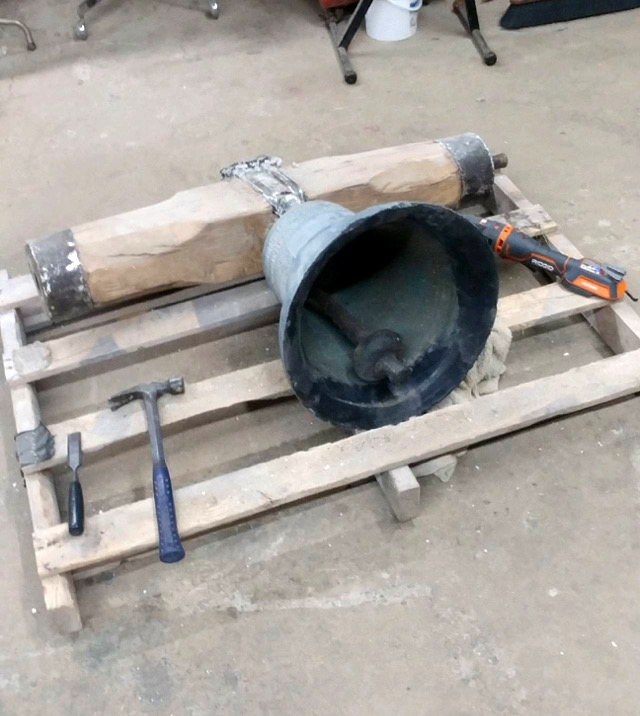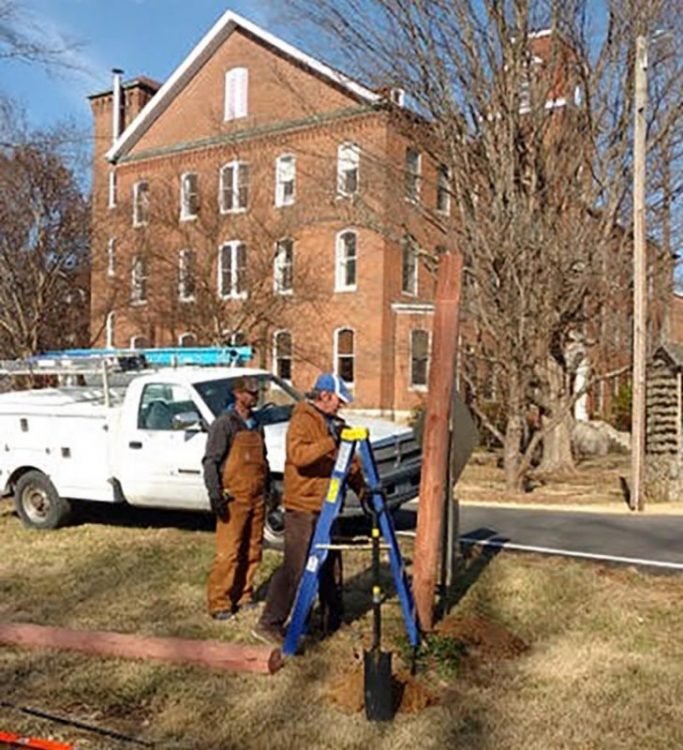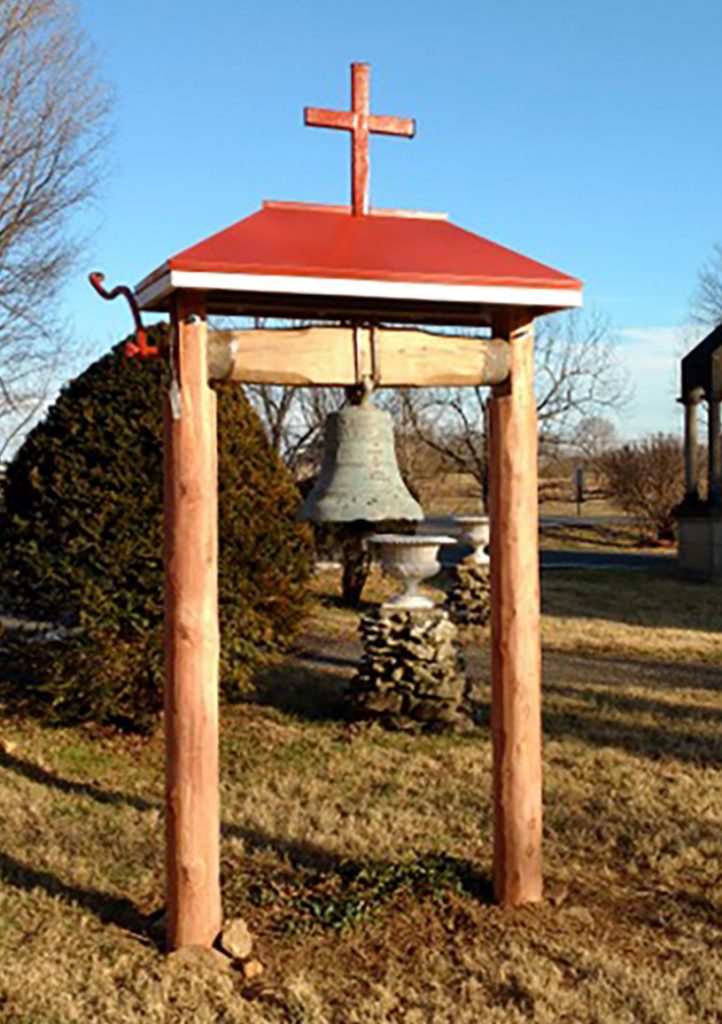The Mission Bell Repair
Posted on March 9, 2021, by Sister Anndavid Naeger SL

Photo by Joey Edelen
“We found the large cedar tree in the holler near the Valley House,” said Robbie Lyvers. It had been felled during what then Gov. Steve Beshear had called “the biggest natural disaster in modern Kentucky history — the ice storm of January 2009.” Robbie, along with Joe Graves, worked for days to get the tree transformed into posts. They chain-sawed the circumference about two inches to reach the deep red near the inner core of the tree. Then it was cut in two and each post planed and sanded into the final octagon logs with a small ledge on top of each to hold the bell structure system. The beam, almost yoke-shaped, from which the bell hangs, had many coats of paint which were laboriously removed to reveal a still healthy oak beam which has withstood the test of time. The photo on the left shows the bell. Robbie said, “We didn’t dare touch the bell.”
That 184-pound relic is a little pockmarked; the rim has worn rough edges and it has a small crack at its base which may warrant the clapper being wrapped in a thick piece of rubber to lessen the blows against the walls of the bell. It is the hope of all the restoration crew that no coats of paint ever be applied to any of the wood. The new roof with its cross atop was fashioned onto the original wooden frame, which had been protected from the elements over long years past.
The bell has a casting date of 1660 with the inscription: AVE MARIA GRACIA PLENA ISOSE SIENDO BADE SA COR BVENA VENTVRA CERDA. A translation from the Spanish by Mother M. Francisca Lamy reads: “Ave Maria Gracia Plena – Hail Mary full of grace, is the name of the bell indicating it was an Angelus bell, the subject of the sentence. The rest of the inscription in the literal meaning then follows: “was made whilst Cor was Abbess, Bonaventure Cerda 1660.” (Sister Bonaventure was apparently the Abbess of some local monastery.) Before he left Belgium in 1805, Father Nerinckx purchased the bell, had it crated and shipped to the port in either Baltimore or Philadelphia. Then it went by wagon to the Ohio River, then by barge to a warehouse in Louisville, Ky., where it remained until it was collected by Father Nerinckx.

Photo by Joey Edelen
The rest of the history comes from the book, “History of St. Charles Church.” “The bell is a fine one, and has a beautiful mellow tone, and can be heard by the farmers around for several miles. It was brought to this country by Father Nerinckx and given to St. Charles Church where for many years it has rung forth the praises of God.”
After that parish built a new church, it was decided to give the bell back to us. The Record recorded the transfer: “The ancient first bell of St. Charles Church, said to be the first bell in Kentucky, was solemnly translated to Loretto Motherhouse and presented to Loretto Academy. A little procession of acolytes in soutane and surplice, led by their pastor, came across the hills to escort the old bell to its new home. The superiors of Loretto, with some of the oldest members, were on the grounds to meet and welcome the guests, a psalm was sung and the bell with its floral decorations, was placed on a temporary resting place. [Then Loretto Academy, now the front porch of Rhodes Hall Art Gallery.] It is very thick, somewhat battered by long use, but still retains a solemn tone, full of holy suggestions from a hallowed past. How many ears have listened to this bell during … its existence? Monks in old world cloister; peasants upon the hillside; lords in feudal castles; sailors on the deep, and then the scattered settlers in Kentucky wild, and the first religious women in their log-built convent. To all, the hallowed metal has spoken of God and sounded only His praise, or to warn the toilers it was time for holier duties, doing that for which it was made and consecrated. May our lives be not so prolonged, but equally well spent.”
Standing near the bell area one can almost hear it pealing the beginning of our China, South America and Pakistani missions as the Sisters for those endeavors journeyed off our hill to meet their destiny therein. In this space by Father Nerinckx’s cabin and the Seven Dolor statues which lead to the entrance of Our Lady of Sorrows Cemetery, we could evoke the ancient words: “Come not nigh hither, put off the shoes from thy feet: for the place whereon thou standest is holy ground.”

Photo by Anndavid Naeger SL
